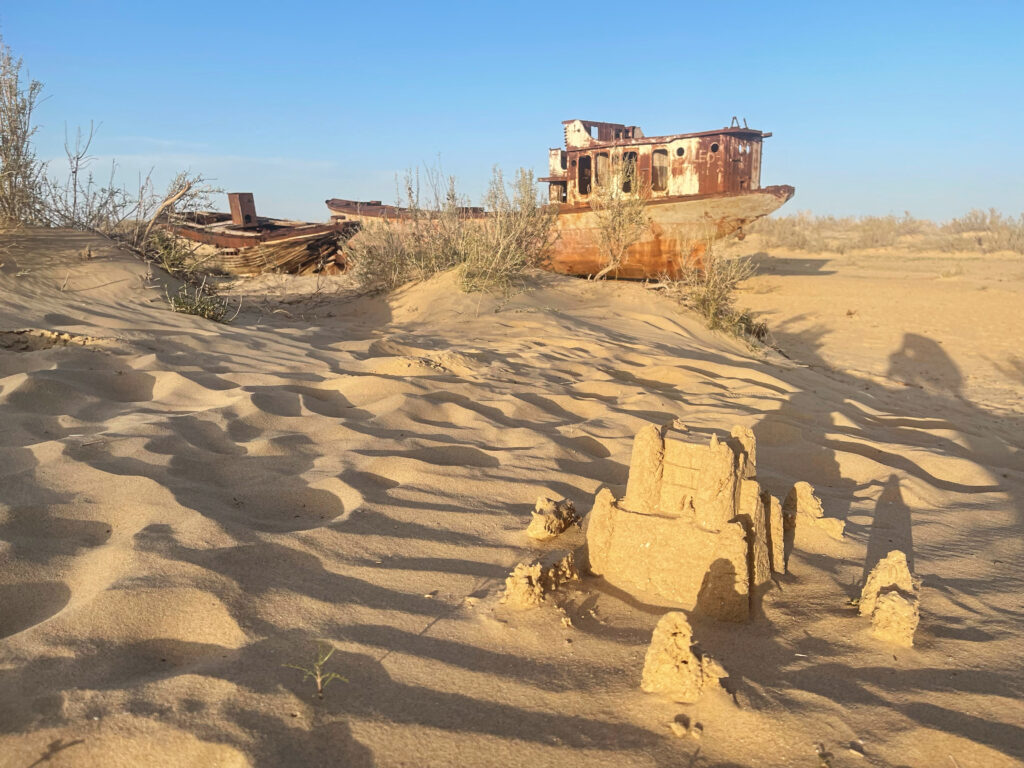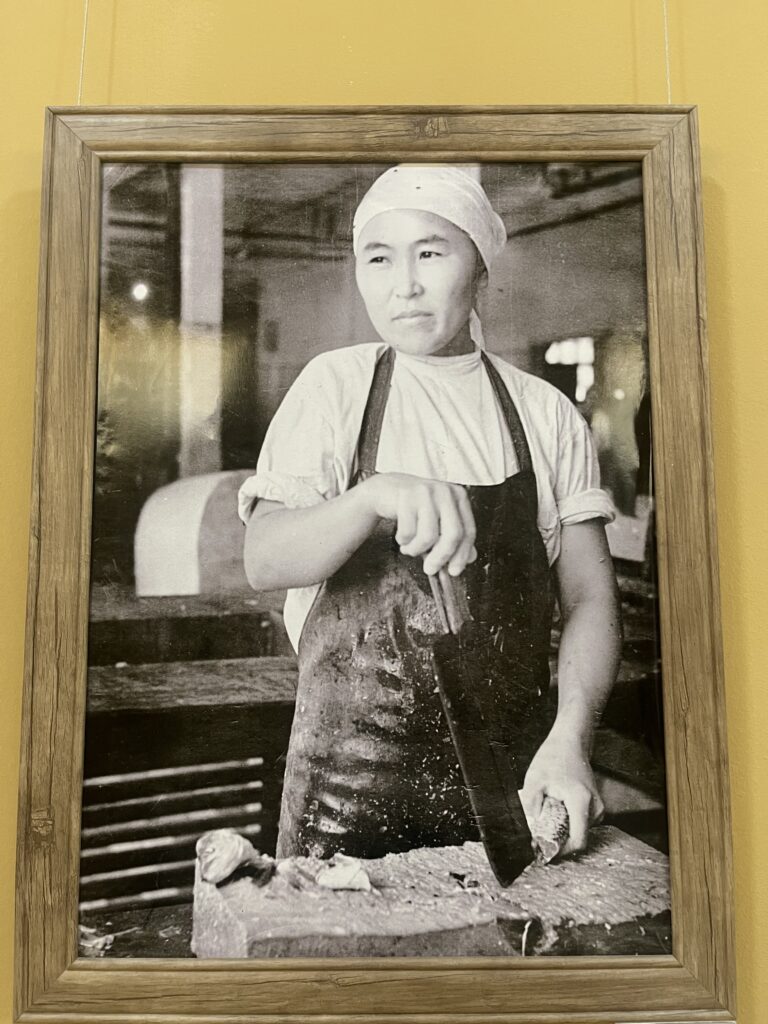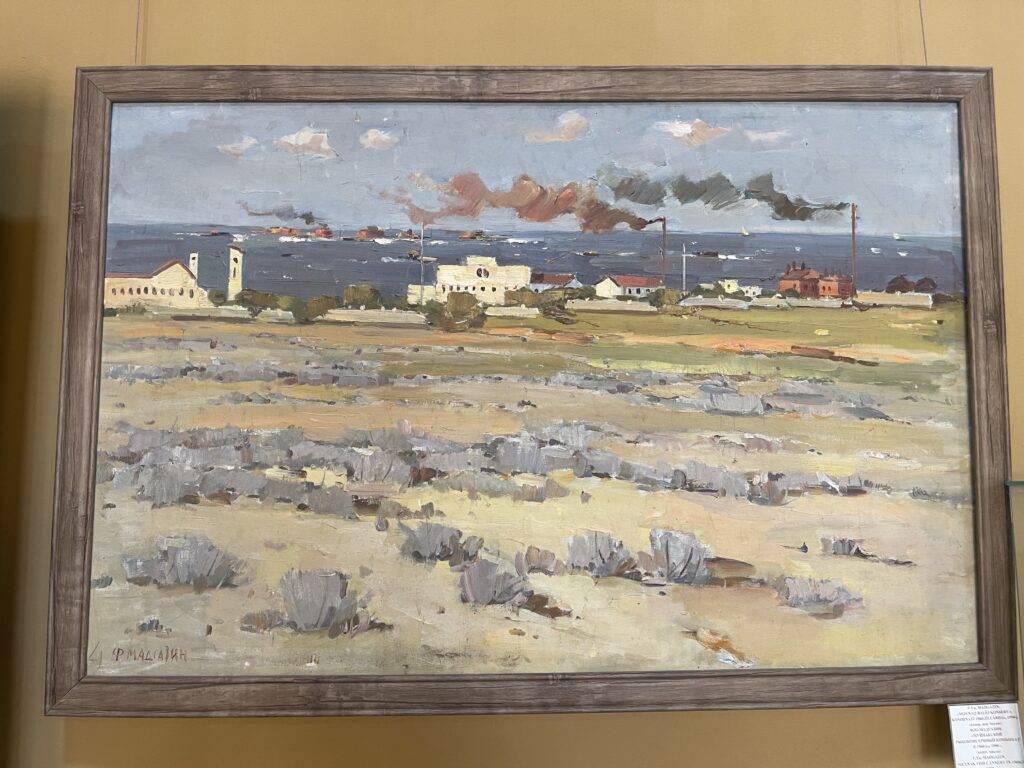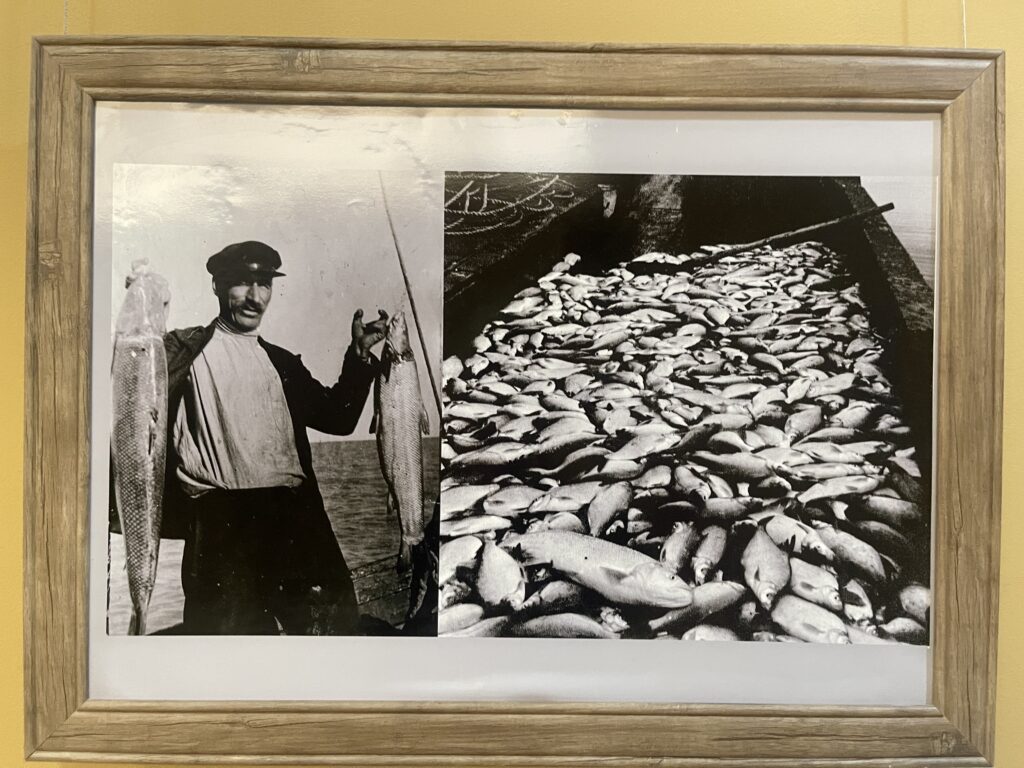The Aral Sea, once the world’s fourth-largest inland body of water spanning over 68,000 km² (nearly the size of Ireland), has shrunk by 90% since 1960, and is considered to be one of the world’s greatest man-made disasters.
During Aral Sea Tourism Week, I visited Muynak, written Moynaq in the local language, a city in northern Karakalpakstan that was once a bustling sea port on the Aral Sea but is now home to the world’s newest desert, the Aralkum.
In this Aral Sea travel guide, I’ll share the history of sea, how to visit Muynak, and what there is to see there now. This article forms a part of my Karakalpakstan travel guide.
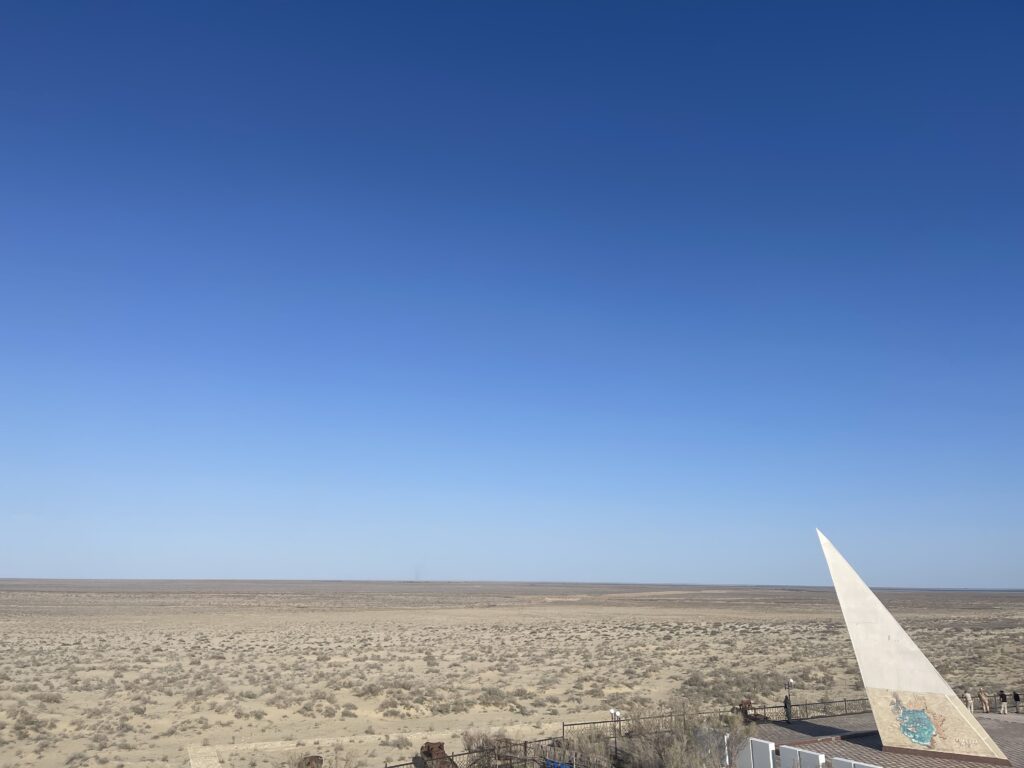
Aral Sea History
The Aral Sea once supported a thriving fishing industry and sustained many prosperous communities through its natural resources. Its fishing industry was able to catch 40,000 tonnes of fish annually.
The decline of the Aral Sea began with Stalin’s Great Plan for the Transformation of Nature in the 1940s, which aimed to boost agricultural productivity through extensive irrigation projects. The plan diverted the Syr Darya and Amu Darya rivers, the sea’s primary freshwater sources, to support cotton cultivation in the Soviet Union.
By the 1960s, the Aral Sea had lost significant water levels, eventually drying up and transforming into the Aralkum desert, severely impacting the local environment and populations.
The disappearance of the Aral Sea has also led to the loss of the marshes and wetland ecosystems of the Amudarya and Syrdarya river deltas, resulting in a 50% decline in the sea’s flora and fauna.
Additionally, dust storms are known to spread 75 million tonnes of toxic sand and salt as far as Europe and Antarctica. Local rates of tuberculosis and cancer are 50% higher, and only half the population has access to clean water.
There are numerous initiatives attempting to mitigate the effects of the catastrophe. The Green Aral Sea project is a charity raising funds to cultivate drought-resistant saxaul trees on the dried seabed.
The Aral Sea Marathon is a growing annual event aiming to bring global attention to the environmental and economical issues. We’re also excited to call ourselves partners of the marathon!
Traveling to the Aral Sea in Muynak
By far the most popular place to visit the former Aral Sea is in Muynak, home to the dystopian ship graveyard where abandoned fishing vessels were left to rust in the sand. It’s both beautiful and melancholic, with around 10 rusty, deteriorating boats of various shapes and sizes, slowly falling to pieces in front of a desert landscape that resembles the edge of the world.
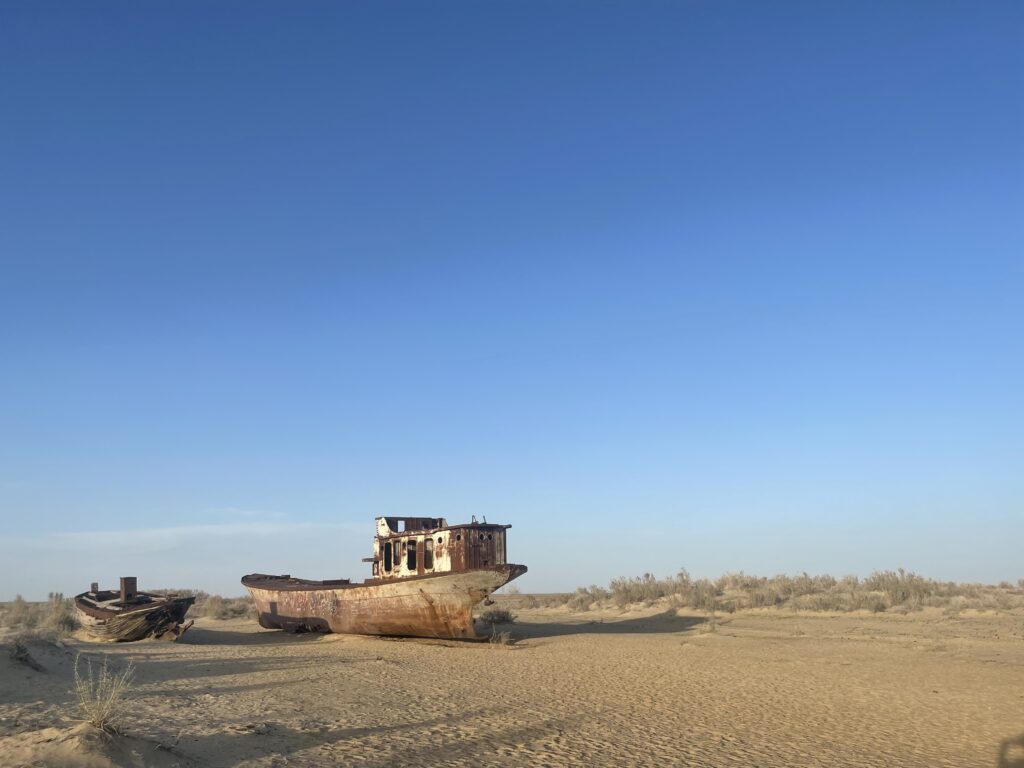
Muynak, around a 3-hour drive from Karakalpakstan’s capital, Nukus, serves as the Uzbekistan gateway to the Aral Sea. This small city consists mainly of one long street that leads to the ship graveyard at the hill’s summit. There are a small number of hotels and restaurants catering to the trickle of tourists that visit here but don’t expect an overly developed tourist scene here.
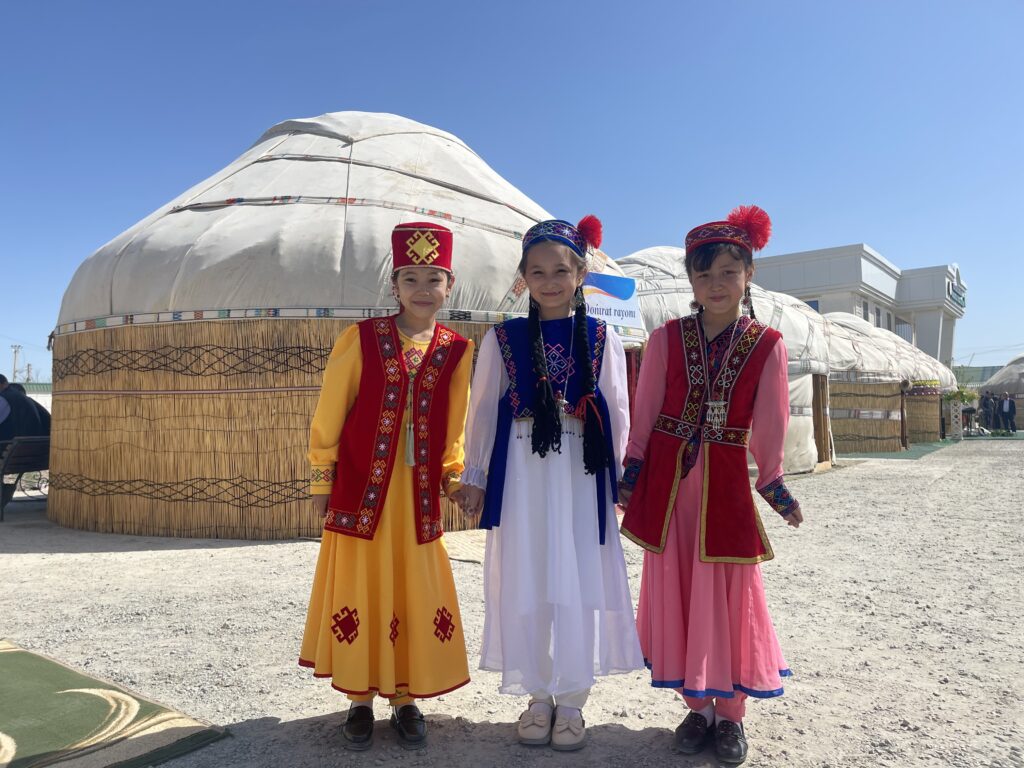
Places to Visit in Muynak
Ship Cemetery
The abandoned ships are the primary attraction for tourists here. By my count, there are 10 of them, and visitors can get as close as they like—even climbing aboard them is permitted. However, the ships are deteriorating, so exercise common sense around them.
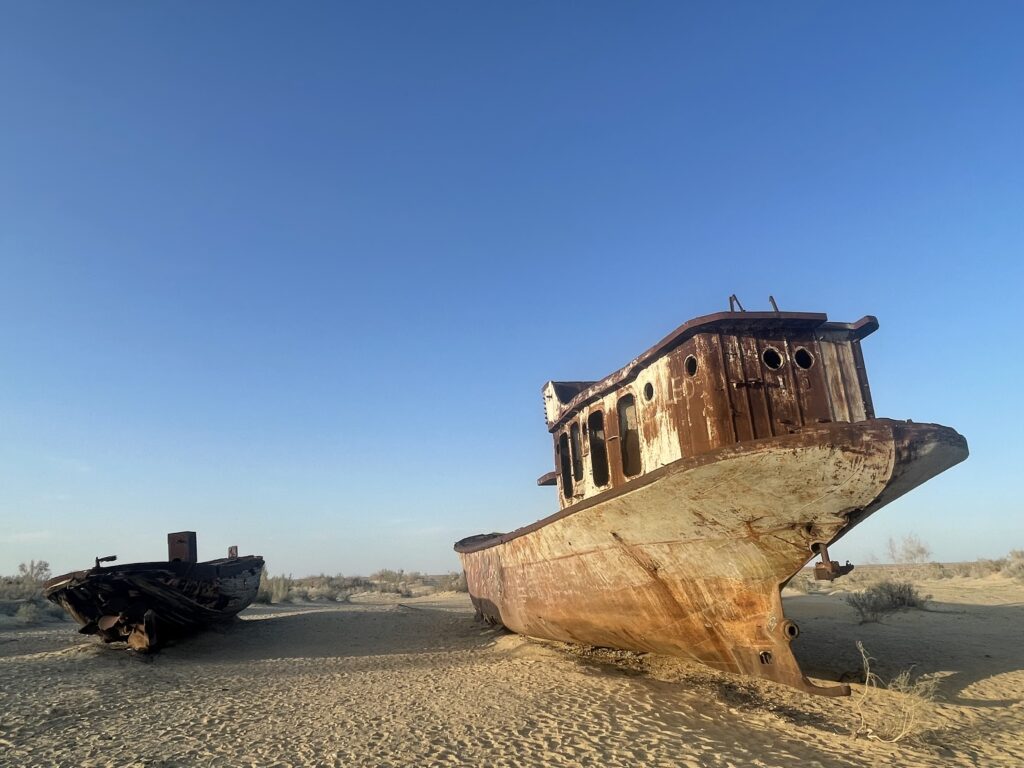
I visited in the evening when the temperature was dropping and the sun was setting. However, for the perfect photoshoot, I recommend going at sunrise instead of sunset as the cliff blocks the sun’s rays in the evening, casting shadow over most, but not all of the boats. In the morning, the sun rises over the horizon, which I imagine offers a much better view.
Muynak Lighthouse
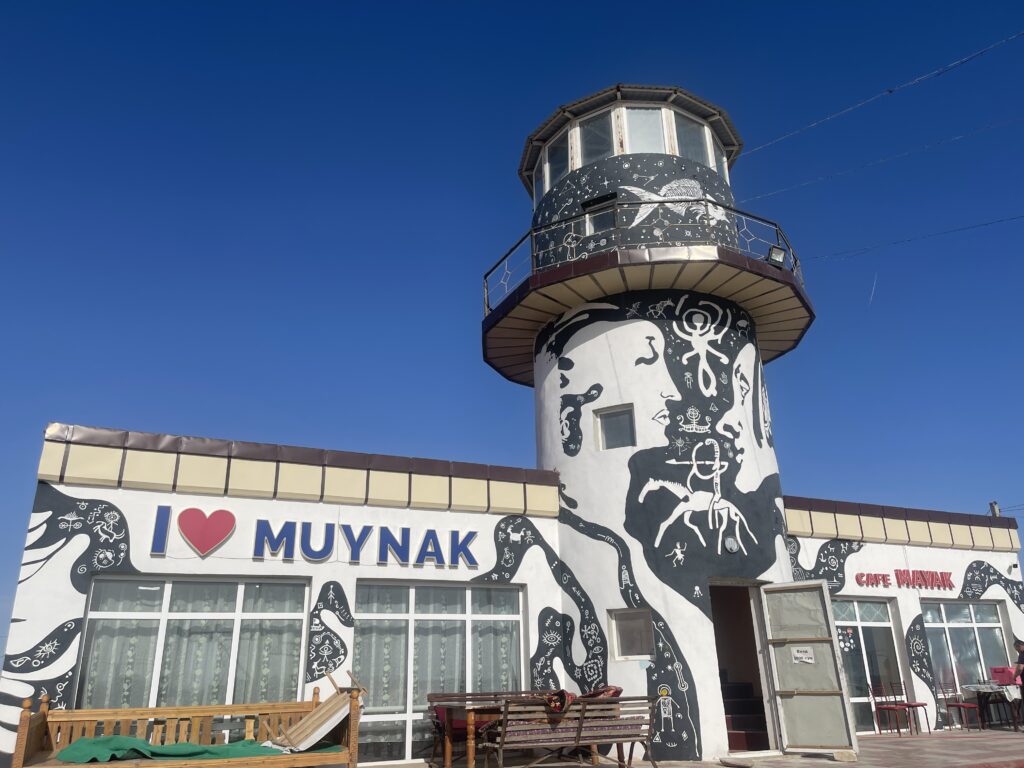
Visiting Muynak today it’s hard to imagine there was ever a body of water here but the lighthouse is a reminder of what once was. Today the lighthouse has been converted into a cafe with tea, coffee, beer and light meals like shashlik. You can walk up to the top of the lighthouse for an excellent view of the ship graveyard for a token fee of 5,000 Som—although it was free for me as a customer of the cafe.
Yurt Camp
The yurt camp, located right next to the lighthouse, is the perfect place to stay for sunset and sunrise views of the former sea, as well as for some stargazing after dark. There are three yurts, all less than a minute’s walk from the viewing platform.
Facilities at the camp are basic so it might not be for everybody and it seems they can only be booked as part of a tour.
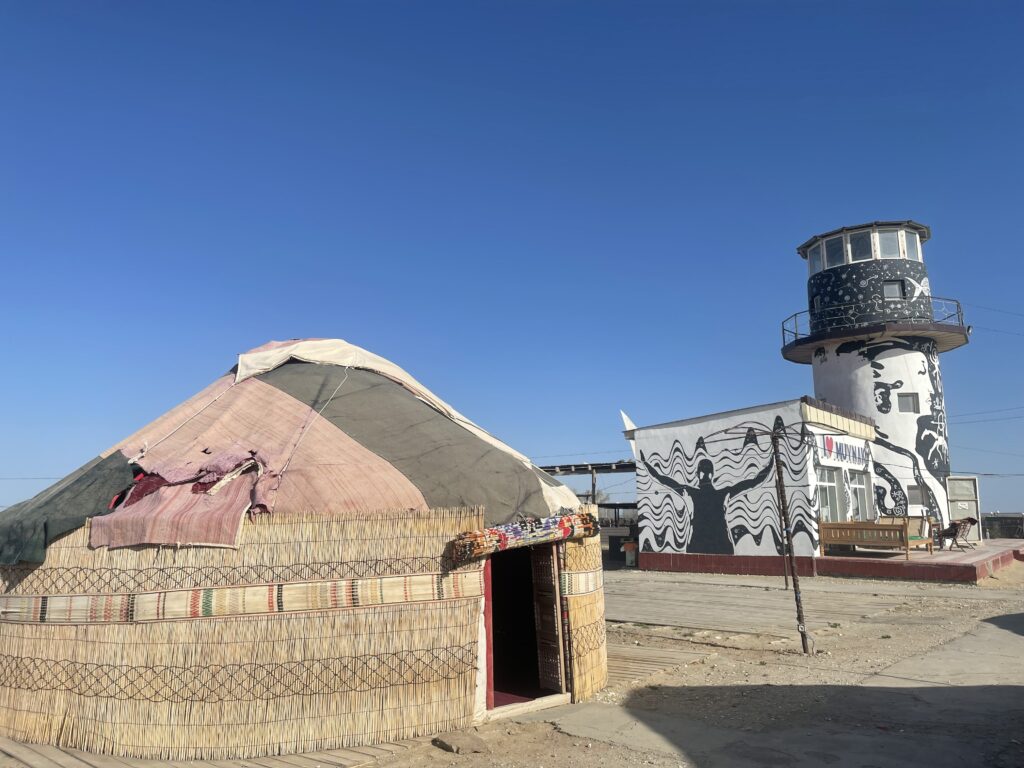
Aral Sea Historical Museum
This small museum doesn’t have a ton of things to see but it does have some interesting photos and artwork depicting life during the region’s better days. The entrance fee is 35,000 Som.
Where to Stay in Muynak
If planning to stay overnight, there are very limited options for accommodation in Muynak. Don’t expect too much, hotels here are very basic. At the time of writing there is only one hotel available to book online – Hotel Ratmina. It’s very basic but it’s you’re only choice unless you can are booking via a tour. Breakfast for me included omelet, bread, tea and coffee.
Sources: Green Aral Sea, Aral Sea Crisis, Rewilding the Aral Sea
